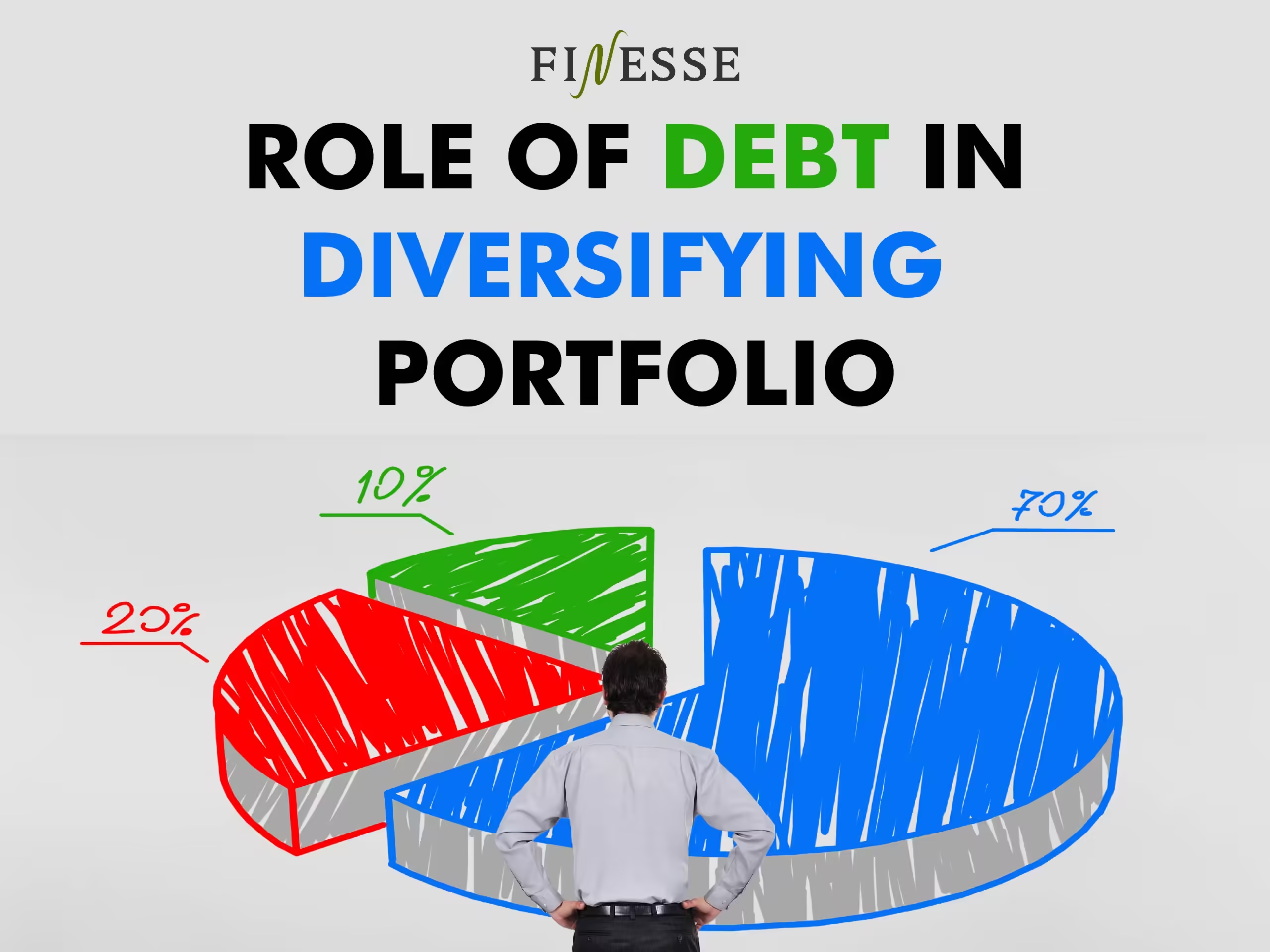
When it comes to investing, one golden rule stands out: never put all your eggs in one basket. Diversification is key to managing risk and achieving long-term financial growth. While equities often dominate the conversation around investment returns, debt investments are equally important, playing a crucial role in creating a well-rounded portfolio. In this blog, let us explore how debt instruments can stabilize and strengthen your investment strategy.
Capital Preservation: The Safety Net You Need
Investing in the stock market can be thrilling, but it comes with its fair share of risk. In contrast, debt investments, such as bonds and fixed-income securities, provide a reliable foundation. They are far less volatile than equities, offering a safety net to protect your capital during turbulent times. Whether you’re a risk-averse investor or someone looking to balance a more aggressive equity portfolio, debt instruments help safeguard your investments, ensuring that a portion of your wealth remains intact, even when markets are shaky. Capital preservation is essential for investors who cannot afford significant losses to their principal, particularly those nearing retirement or saving for specific short-term goals. The aim is to ensure that your initial investment remains secure over time, even during periods of market turbulence.
Consistent Income: A Steady Stream of Cash Flow
One of the most appealing aspects of debt investments is the consistent income they provide. Many debt securities, like government bonds or corporate bonds, pay out regular interest. This can be especially valuable for retirees, who may rely on a steady stream of income, or for anyone seeking predictable returns. Compared to leaving money in a traditional savings account with minimal interest, bonds often provide a higher yield while still maintaining a lower risk profile. It’s an efficient way to make your money work harder without venturing into high-risk territory.
Risk Mitigation: Balancing Volatility with Stability
The financial markets are like a rollercoaster: full of ups and downs. Including debt in your investment mix acts as a stabilizer, reducing the overall volatility of your portfolio. Historically, bonds and stocks have shown an inverse correlation, meaning that when stock prices fall, bond prices tend to hold steady or even increase. This dynamic can protect your portfolio during market downturns, ensuring that your investments are more resilient and less susceptible to sudden shocks.
Enhanced Returns Through Balanced Allocation
For those aiming to maximize returns without taking on excessive risk, the key lies in strategic asset allocation. A thoughtful blend of equity and debt can yield a well-balanced portfolio, combining the potential growth of stocks with the reliability of debt.
Asset allocations are not set in stone. Having allocation to liquid debt instruments can prepare us for re-entry into other asset classes when valuations are right. This enhances returns and reduces risks.
This combination enables you to aim for higher returns over the long term while mitigating the risk of significant losses. The right mix will depend on factors like your investment goals, time horizon, and risk tolerance, but incorporating debt is a proven way to smooth out the bumps in the road.
Flexibility to Adapt to Market Conditions
The world of debt investments offers flexibility to suit various market scenarios. For example, if economic conditions are uncertain, you might prioritize safer government bonds. If the economy is doing well, you may be inclined to invest in higher-yielding corporate bonds. This adaptability makes debt investments versatile tools in your financial strategy, allowing you to adjust and optimize your portfolio as conditions change. The ability to customize your debt exposure ensures your investments stay aligned with your evolving financial goals.
Overall, debt investments should not be overlooked when building a diversified portfolio. They bring stability, consistent income, and risk control, creating a cushion against market volatility. By thoughtfully incorporating debt into your investment strategy, you can protect your assets while still pursuing growth, giving you the best of both worlds. Remember, a well-balanced portfolio isn’t just about chasing high returns—it’s about sustainable growth, minimizing risk, and maintaining financial peace of mind. Whether you’re a seasoned investor or just getting started, debt can play a fundamental role in securing your financial future. Take a close look at your current asset allocation and consider how debt investments could help fortify your portfolio for the long run.